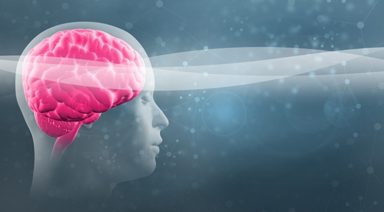What is Plant Spirit Medicine?

In earlier times of human history, people lived in harmony with the natural world, and regarded plants as sentient, aware, intelligent, alive, and healers in their own right.::Ross Heaven
Unfortunately, in current day society, we have moved far away from this perspective. Plants are rarely viewed as anything more than objects that can be reduced to a chemical component, or an object that looks nice perched in a corner.
However, as with many aspects of our natural world, there is so much more to plants than meets the eye.
For those who strive to regain the ancient relationship with indigenous spirituality through plants as our allies, Plant Spirit Medicine can help you discover the healing power of plants.
Eliot Cowan, an American-born healer, fully initiated Tsauirrikame (shaman) in the Huichol tradition, teacher, author, and founder of the alternative healing technique known as Plant Spirit Medicine, remains as a leading authority on the healing wisdom of plants.
I had the pleasure to speak with Cowan to gain further insight into the healing world of plants.
What is Plant Spirit Medicine?
BJB: What is the basis for plant spirit medicine as a healing modality?
EC: In recent times, our culture has basically looked to plants as healing agents in terms of their chemical properties. That is a relatively recent development in the history of humanity. In previous times when people turned to plants as agents of healing they were not primarily concerned with chemical constituents, but rather they saw plants as living beings, as highly aware, having feelings and as well disposed to helping people. It was that living awareness and good disposition to help people that people turned to plants as the primary source for the element of healing potentials.
When people approach plants primarily on the basis of their relationship with plants, I call that Plant Spirit Medicine. I practice and teach one particular approach to that.
BJB: Is there difference between plant medicine and plant spirit medicine?
EC: In practice, they’re often different.
When people refer to plant medicine these days, generally they’re referring to the discovery that plants have certain chemicals that create changes in the biochemistry of the human body. Today, that is by far the most common approach to plant medicine in our society.
When you use the term plant spirit medicine, the primary relationship is not about chemistry. It’s about a spiritual relationship to the plants as living, highly-aware, intelligent beings.
How is Plant Spirit Medicine Different from Herbalism?
BJB: What is herbalism? How does it differ from plant medicine?
EC: Herbalism is a very broad term which (to me) denotes the use of plants as healing agents. That includes using plants as chemical factories, as well as relaying to plants as spiritual healers. It’s a broad term that encompasses any form of relating to plants as healing agents.
BJB: In Plant Spirit Medicine: A Journey into the Healing Wisdom of Plants you write “Plant spirit medicine does not diagnose or treat any illness…the practitioner of plant spirit medicine, in assessing which plants to use with a given person, pays no attention whatsoever to any symptoms that person may have.”
What is the Role of Plant Spirit Medicine?
EC: You’re on the right track with this question. The healer makes no attempts to treat symptoms. The reason for that is we recognize that the symptom is merely a messenger for an underlying imbalance.
Our effort is to determine what the imbalance is and call upon the spirit of plants to correct the imbalance.
Now that doesn’t mean that people don’t often and in fact usually experience a great deal of positive change in their symptoms. The difference is when the change that comes about in the symptoms, and for that matter equally important change that comes about in how people experience their own lives, that’s a byproduct of using the plants to help correct what we call underlying imbalances. So, there’s no attempt to diagnose a symptom; there’s no attempt to treat a symptom but Plant Spirit Medicine is highly effective at helping symptoms.
I would also add the reason we call it Plant Spirit Medicine is for two reasons:
- We call on the spirit of the plant to affect the spirit of the person.
- We’ve seen that in this day and age, with the present conditions, the vast majority of people’s symptoms of any kind have a spiritual basis that can be influenced with a spiritual intervention, as opposed to a chemical intervention.
How Do Healers Work with Plant Spirit Medicine?
BJB: How do you physically work with Plant Spirit Medicine?
EC: The first thing is a lengthy and in-depth intake procedure that goes in detail about health and personal history. This can take anywhere up to two hours. The goal with the intake is to give the healer a basis to see the underlying imbalance which if corrected can help the person be more whole and well. Plant Spirit Medicine healers look at the whole person, seeing all they have to offer, leaving judgment and criticism behind. You take the time to get to know the person very deeply so you can follow them through the process. Following the intake, treatments can begin.
There are various ways of doing this, but the most common way that I and my former students use is that we spend a great deal of time developing a relationship with a number of plants as living, aware, spiritual beings, and coming to know what kind of medicine the plants may have to offer. You could say we’re building partnerships, or friendships.
There are two parts to this:
- Preparation for the healer. This consists of developing a relationship with a variety of plants to see which type of medicine they have to share.
- Developing skill and depth of perception to look into the person’s spirit to see what it needs.
One or more plants are selected which can offer exactly what the person needs. The plants are called upon as spiritual presences to help supply what the person needs.
The way that looks is unseen.
The healer calls upon the healing presence of their ally (the plant/s) and asks them to come through their hands. The healer’s hands are placed lightly onto the person’s body and the medicine of the plant passes through the hands into the body and creates an effect.
The Importance of the Relationship with Plants as Living Beings
BJB: Why is it essential to ask the plant for permission to use it for the purpose of healing?
EC: It’s a basic foundation of good relationship. In other words, if I ask you for the use of this, the question is, how can I pay you back?
The problem with society today is when you think of that kind of respectful exchange, we tend to limit it to human-to-human interaction. The ancient wisdom is that it’s not really designed to be limited to human-to-human interaction.
All the aspects of nature, certainly including plants, are spiritual beings who are aware, have intelligence and feelings. If you’re asking them for something and receiving something from them, you’re blessed to give to give something back to stay on good terms.
It’s a matter of good manners.
BJB: This reiterates when in Plant Spirit Medicine you write, “…plants spirit medicine is low tech; it produces healing purely through good relationship with the natural world…we are just asked to follow a simple rule: take only what you need and give back something that satisfies the one you’ve taken from.”
Approaching Plants from a Spiritual Perspective
BJB: What is the one belief that we as Westerners can let go of to begin to improve our relationship with the natural world?
EC: I would approach it a little differently. In these kinds of manners that we’re talking about, I think experience is much more important than belief.
What I would suggest is that if people are interested in developing better relationships to plants, or for that matter other aspects of the natural world, they could try to make an assumption that a plant is fully alive, fully aware, has feelings and entertain the possibility that its awareness could be more developed than that of ours.
As a plant species that has been around longer than the human species, maybe there is something to be learned if you approach plants and the natural world with interest and respect.
If people would take this on as an assumption without believing it or disbelieving it, but instead just trying out the perspective of ‘what would happen if I were to approach a plant that way?’ I think that would change a lot because the experience of plants would not be based on beliefs.
BJB: What has been the most surprising or unexpected part of your work with Plant Spirit Medicine?
EC: I’m always being surprised by their uncanny effectiveness as healers. I’m always being surprised by how they demonstrate a deep and broad awareness. They seem to know in detail so much about the person who approaches them for healing, including the person’s past and (believe or not) their future. I’m constantly being surprised not only from my own stories, but also by the practitioner’s stories and by what is possible.
BJB: For someone new to Plant Spirit Medicine who would like to learn more, where is a good place to begin?
EC: Be open to the experience of plants having more to offer than what we have deemed possible.
Whether you choose to cultivate a rich and intriguing relationship with plants, or not, as humans seem to move farther away from our connection with the natural world, Plant Spirit Medicine is one reminder that all is not lost.
If we treat plants with love, they flourish and grow, and we flourish and grow with them. In their incredible compassion, plants have invited us to be in a dance with them so that we can sense the healing power of the Divine in them.
There is a distinct and viable possibility that we can indeed rebuild the spiritual bridge that connects humanity to the living matrix of the planet, the plants as well as the bountiful natural elements that surround us.
By leaning toward the question of ‘what would happen if I were to approach life as an inquisitive seeker,’ we can begin to re-discover the essence and vast possibilities of all aspects of life that lie in wait around us.
As Seamus Heaney reminds us “we are all hunters and gatherers of values” and it’s up to us to “persuade that vulnerable part of our consciousness” to create what needs to be created, to honor what needs to be honored and to preserve what needs to be preserved.
For more information on exploring programs in The Plant Spirit Medicine Training Course, or smaller programs that range from evening talks, or one to five day programs, you can log onto Blue Deer Center.
Government Approval of MDMA for Treating PTSD Likely

For the millions of Americans suffering from Posttraumatic Stress Disorder (PTSD), there may finally be a solution. A late-stage clinical trial of the psychedelic drug MDMA has shown great promise in treating the condition, making FDA approval likely in the next few years.
MDMA, an illegal drug commonly known as “ecstasy” or “molly” started out as a synthetic compound created in 1912. After a period of use in the treatment of mental health conditions, it escaped in the 1980s from the clinic to the dance floor and was criminalized by the FDA. But a few proponents continue to push for research, including Dr. Rick Doblin who founded the Multidisciplinary Association for Psychedelic Studies, or MAPS.
Decades later their efforts finally led to a green light from the FDA for clinical study. Since then, there have been three rigorous clinical trials, which have all shown enormous promise of the drug in combination with psychotherapy to treat PTSD.





































